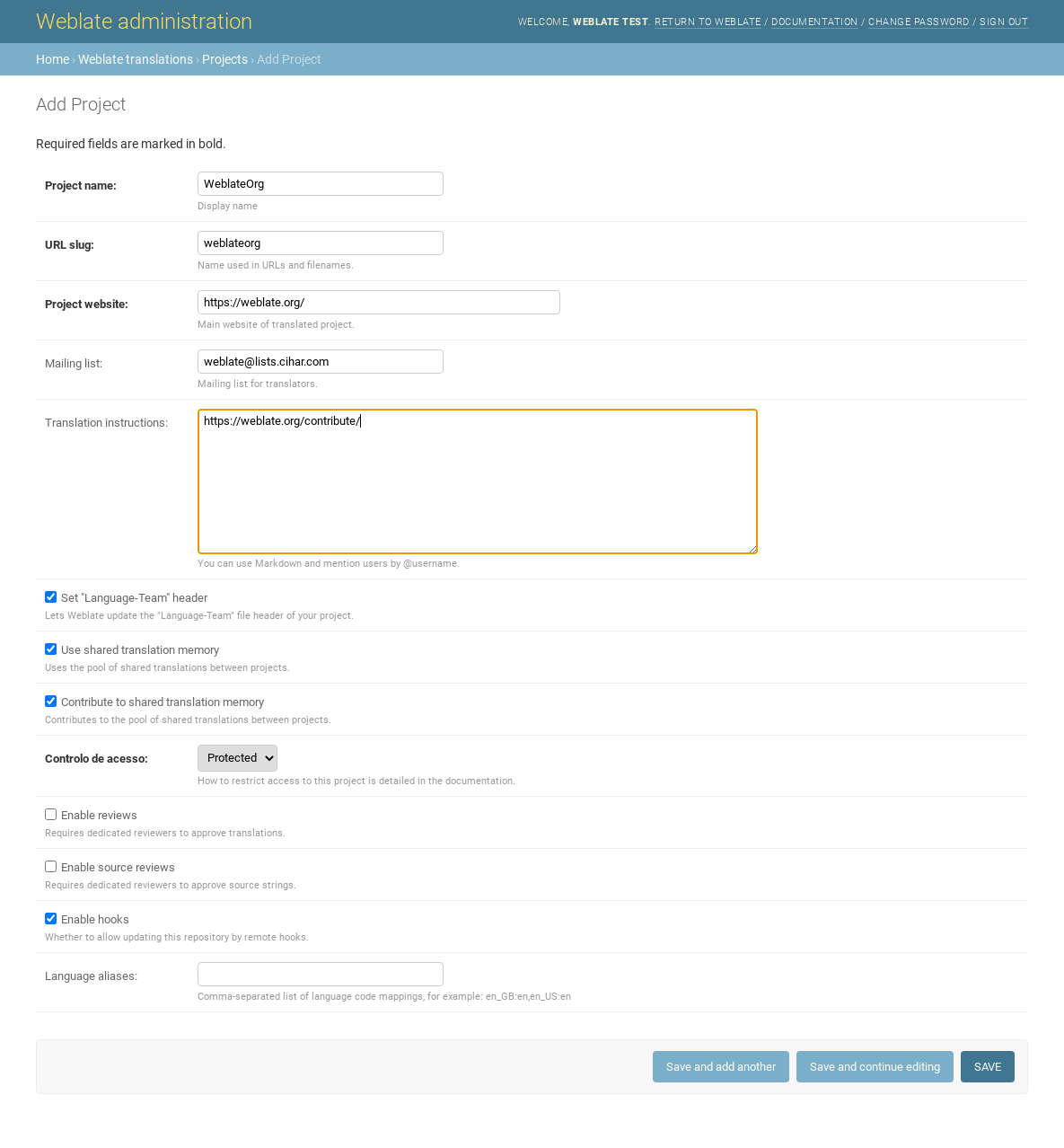Management interface¶
The management interface offer administration settings under the
/manage/ URL. It is available for users signed in with admin
privileges, accessible by using the wrench icon top right:

It includes basic overview of your Weblate:
Support status, see Getting support for Weblate
Backups, see Backing up and moving Weblate
共有翻訳メモリ、参考 翻訳メモリ
Performance report to review Weblate health and length of Celery queues
SSH 鍵管理、参考 SSH リポジトリ
Alerts overview for all components, see Translation component alerts
The Django admin interface¶
警告
Will be removed in the future, as its use is discouraged—most features can be managed directly in Weblate.
Here you can manage objects stored in the database, such as users, translations and other settings:

In the Reports section, you can check the status of your site, tweak it for Production setup, or manage SSH keys used to access リポジトリへの接続.
Manage database objects under any of the sections. The most interesting one is probably Weblate translations, where you can manage translatable projects, see Project configuration and Component configuration.
Weblate languages holds language definitions, explained further in Language definitions.
Adding a project¶
Adding a project serves as container for all components. Usually you create one project for one piece of software, or book (See Project configuration for info on individual parameters):

Bilingual components¶
Once you have added a project, translation components can be added to it. (See Component configuration for info regarding individual parameters):

Monolingual components¶
For easier translation of these, provide a template file containing the mapping of message IDs to its respective source language (usually English). (See Component configuration for info regarding individual parameters):
